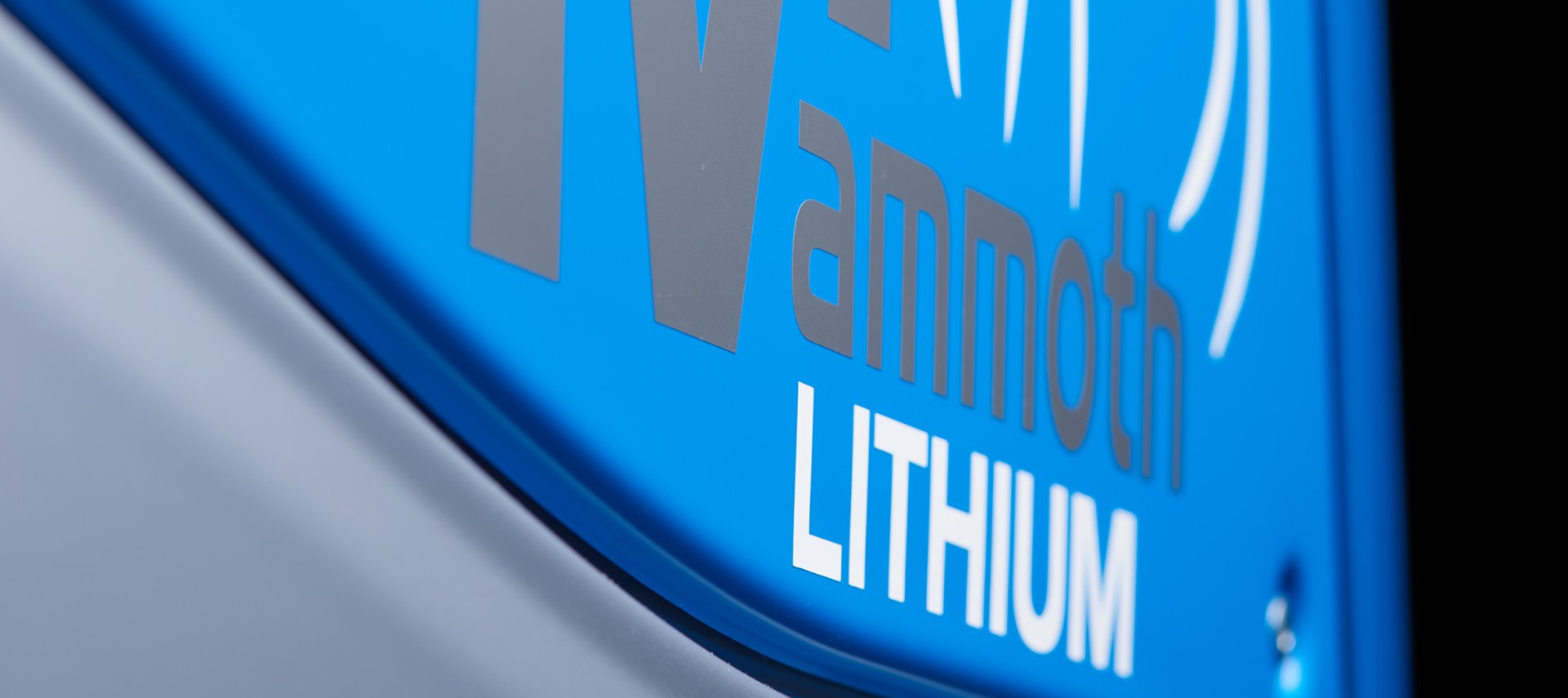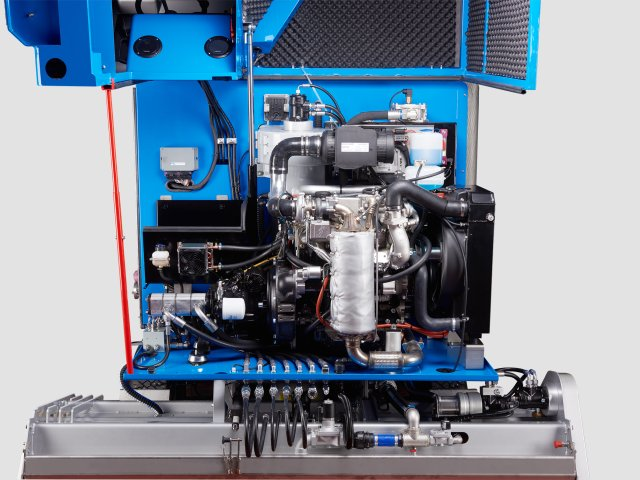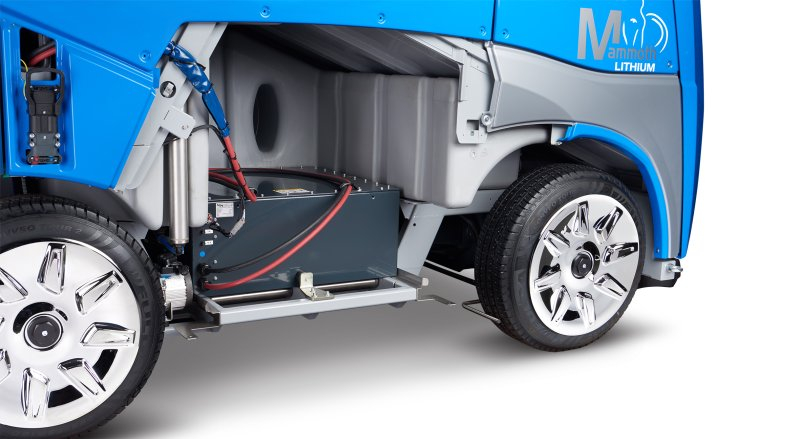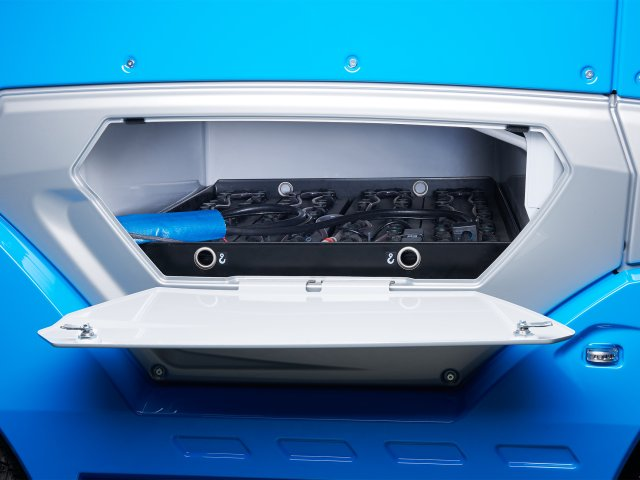Why Lithium-Iron Phosphate Batteries
Are the Future of Ice Resurfacing
Why Lithium-Iron Phosphate
Batteries Are the Future of Ice Resurfacing
At WM technics, we placed our bets
on the electric drive with lithium-iron phosphate
batteries for our ice resurfacing machines. This is due
to the good odds: our ice resurfacers are “born
electric”, meaning we have designed them as electric
vehicles right from the start. Also, we are certified
battery assemblers and won’t work with anything less
than state-of-the-art technology – and that’s what
lithium-iron phosphate batteries actually are.
E-mobility is a pretty young market prone to constant
change, innovation, and paradigm shifts.

So is also the ice resurfacing
business. Which batteries are being used? And why does
WM technics bet on lithium-iron phosphate batteries? So
many FAQs – we have the answers.
On which kind of motors do ice
resurfacing machines run?
What are the benefits and
disadvantages of the different kinds of batteries
(lead-acid, lead-gel, lithium-iron phosphate)?
On Which Kind of Motors Do Ice
Resurfacing Machines Run?
The whole topic is complicated, so
our answers cannot be too detailed. That is why we are
breaking everything down here into 2 different types of
drive.

1. Combustion Engines
a. Fuel or gasoline
The good, old combustion engine
driven by fuel or gasoline is still a thing in ice
resurfacing. But the signs are clear: there won’t flow
much water down the river until the market turns fully
electrical. That is happening for pretty good reasons:
combustion engines are deafening, emit polluting exhaust
gases, and will one day no longer be affordable as oil
reserves dwindle. But we will still turn the corner
before the last oil reserve has been drained dry: even
the automotive industry is gradually accepting the
change to -mobility.
b. Natural Gas (LPG)
LPG engines are actually combustion
engines and dominate the ice rinks in the United States.
And there are good reasons for that: the US has high gas
reserves; therefore, the stock and reasonable prices are
secured for a long time. However, the states are
perceiving the wind of change, not least because of the
recent European shortage of natural gas, and its
implicit consequences have not gone unnoticed overseas.
Even the last person in the States has come to the
conclusion that natural gas is a finite resource and
that e-mobility has become a central aspect of future
mobility scenarios.
2. E-drive with batteries
a. Lead-Acid & Lead-Gel Batteries
(Pb/AGM)
Lead acid and lead gel batteries
are iconic of the rapid development that e-mobility has
taken in just a few years, especially in the logistics
sector (forklift): Just as they have become standard in
ice resurfacers, they are already a phase-out product
for the industry. Lithium-based batteries are slowly but
surely overtaking them. Why? We will explain that later.
b. Lithium-Iron Phosphate Batteries
(LiFePO4)
WM technics doesn’t cope with
phase-out products. When we develop new technologies, we
only work with state-of-the-art - that means in terms of
battery-powered e-drive in ice resurfacing machines with
lithium-iron phosphate batteries. High cycle stability
is only one of the advantages; all lithium technologies
have in common: no combustion gases, no unpleasant
odors, and no noise.
Born Electric
That is why we devote ourselves to
the “born electric” principle: our ice resurfacers have
been thought, designed, planned, and built as electric
machines equipped with in-house assembled batteries.

What Are the Benefits and
Disadvantages of the Different Kinds of Batteries
(Lead-Acid, Lead-Gel, Lithium-Iron Phosphate)?

Get here a short overview of the
benefits and disadvantages of the different battery
kinds:
1. Lithium-Iron Phosphate (LiFePO4)
Benefits:
Lifetime: at least 3-4 times as
many charge cycles as lead batteries
Weight: weight reduced by 75%
compared to lead batteries
Efficiency: only 1-2 kWh per ice
treatment
Performance: high discharge power
and extremely high peak power
Charging time: extremely fast
charging with a fast charging terminal (80 % in 60
minutes)
Maintenance: maintenance free
Energy density: high energy density
- one small battery is sufficient
Temperature range: -45 °C to 85 °C
(recommended: -25 °C to 55 °C)
Fast payback: due to less
maintenance, high efficiency in consumption, longevity
Cost/benefit: cost-intensive
purchase/long lifetime
Security: Due to their cell
chemistry, LiFePO4 cells are
considered to be intrinsically safe as they eliminate
the risk of thermal runaway and membrane melting which
can occur in other lithium-ion accumulators. Operator
safety is enhanced as no toxic gases are emitted while
charging.
Disadvantages:
Acquisition cost: about 2-3 times
more expensive than lead-acid batteries with the same
capacity
Charge balancing: battery
management system (BMS) necessary
2. Lead-Acid Batteries/Pb
Benefits:
Reliability: the most reliable of
all batteries
Lifetime:
up to 1,800 charging
cycles
Maintenance: individual cells
replaceable with commercially available parts
Cost/benefit: inexpensive purchase
Disadvantages:
Maintenance 1: water level
maintenance once a week
Maintenance 2: annual all-around
maintenance of approx. 120 minutes
Odor: gas or sulfur odor (formation
of oxyhydrogen gas);
Corrosion:
accelerator in case of poor ventilation
Infrastructure: garage with
ventilation necessary
Charge: constant charge necessary
Charging time: 6-7 hours with
qualitative charging
Efficiency: poor
3. Lead-Gel Batteries/AGM
Benefits:
Maintenance:
low-maintenance/maintenance-free
Features: sealed cells with gel
carrier without liquid acid
Infrastructure: no special garage
is required
Disadvantages:
Acquisition cost: 1.5-1.7 times
more expensive than Pb
Cost/benefit: medium
acquisition/less power density
Efficiency: poor, high internal
resistance and therefore relatively low power output